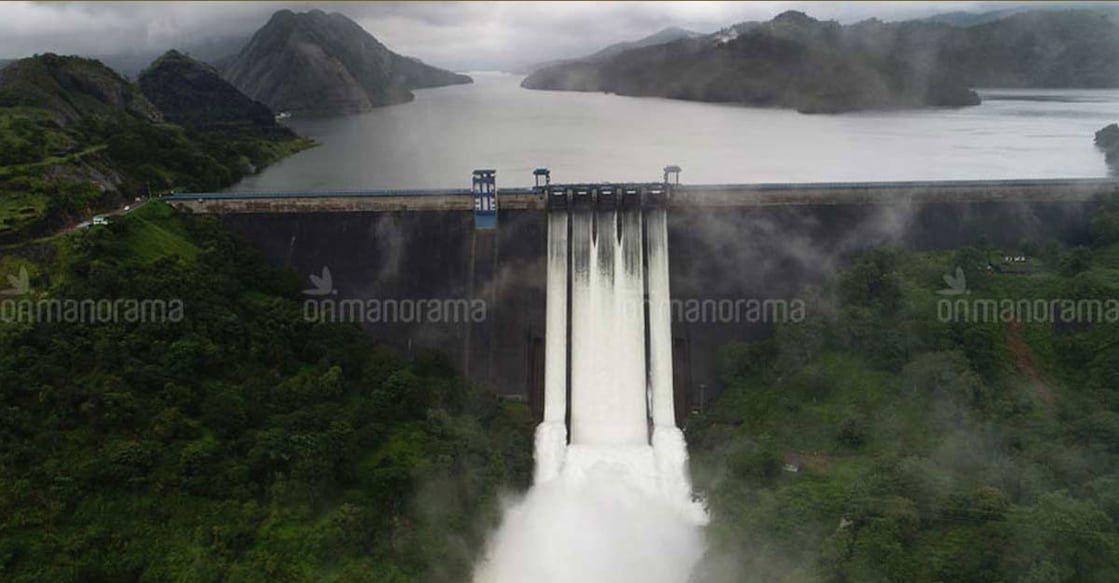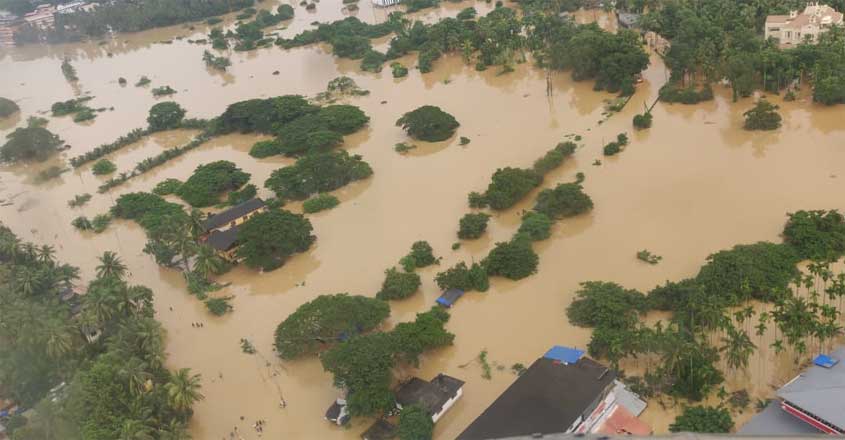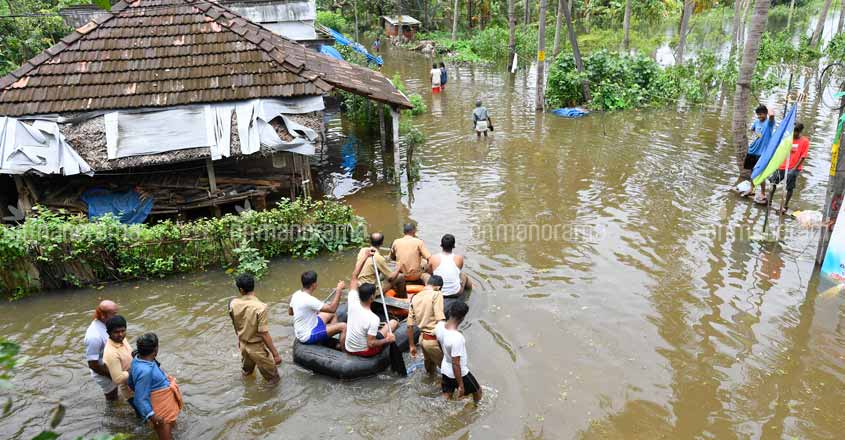Why 'August deluge' is highly unlikely this year in Kerala

Mail This Article
The Nisarga cyclone, as it turned out, guarded Kerala against the destructive potential of the advancing southwest monsoon this year.
Just when the monsoon was about to land, because of the COVID-induced fall in power consumption, our major dams were nearly 40 per cent full. Even during 2018, the year of the deluge, and 2019, yet another flood year, our dams held far less water when the monsoon made its appearance.
A good monsoon, it seemed, could easily trigger floods.
But like a saviour despatched in time, the cyclone that formed over Arabian sea by the end of May this year slowed the progress of the southwest monsoon over the state. Two months later, thanks to Nisarga's effective defence, the southwest monsoon is deficient by 20 percent.
Dams ready to take on August rains
And just as the August phase (widely seen as the wicked and the most unpredictable phase of the monsoon) is about to begin, our dams have got back to shape.
Now, even though power consumption continues to be low, they hold less water than they had during the same period in 2018.
Take for instance, Kerala's largest reservoir, Idukki. On August 2, 2018, it had water up to 730.33 metres – the dam was filling up quickly even though it was generating 40 million units a day, and eventually shutters were opened with calamitous consequences.

This August 2, though the daily consumption is only 15 MU, the water level is only 712.16 metres.
As per the 'rule curve' (the safe water levels in reservoirs for various days), which was developed by the KSEB after the 2018 floods, the reservoir can hold water up to a maximum of 725.6 metres on August 2.
"This means that even if there is more than expected rainfall, the dam is in a position to absorb the additional inflow," a top KSEB official said.
Half empty dams
In fact, all major dams in Kerala hold far less water in their reservoirs this year than what is normal for them. Kallada has 41 per cent less than it normally has at this time. In Idamalayar it is 44 per cent less than what is normal. In Idukki, it is 27 per cent less. In Malampuzha, it is 48 per cent less. In Periyar, it is 58 per cent less. (These figures are taken from the latest report of the Central Water Commission.)
As official figures show, Kerala's major dams are ready to absorb the excess rainfall inflow expected in August.
Why August is a wicked month
It now appears as if the worst could be expected in August. The latest Indian Meteorological Department prediction is the likely formation of a low pressure area over North Bay of Bengal around August 4, which can induce 'heavy' to 'very heavy' rainfall in Kerala during the first two weeks of August.
It was the monsoon behaviour in August 2018 that has given the month of August its diabolical aura.

After a heavy spell in July 2018, it looked like the clouds had settled in August. Between August 1 and 7 there was a rainfall deficit of 38 per cent. And then, when there was no reason to suspect any danger, the monsoon took on a form never seen before.
Between August 13 and 19, there was excess rainfall of of 362 per cent. Idukki alone had 800 millimetres of rain in three days in the middle of August.
A depressive nightmare
Certain atmospheric conditions point to a repeat of 2018. Especially, the low pressure over the Bay of Bengal. It was there in 2019 August, too. A depression over the Bay of Bengal will pull more moisture-laden winds from the southwest causing more rainfall in Kerala and Central India.
However, apart from the low water level in dams, there also seems to be other mitigating factors. It is said that even if Kerala witnesses Biblical scale rainfall this August, a deluge of the 2018 kind is a remote possibility.
2018 and 2020: Rainfall pattern variations
This is because, in 2018, Kerala had witnessed an unseen phenomenon; it had excess rainfall for five months at a stretch, from March to July. In hindsight, it looks like Kerala was storing up for the deluge in August.
In 2018 March, the rainfall excess in Kerala was 56 per cent; in April it was seven per cent; in May it was 49 per cent; in June it was 15 per cent, and in July it was 18 per cent.
However, this year, between March 1 and May 31, there was only a slight excess of seven per cent. And since June 1 to August 2, there is a deficiency of 20 per cent. In other words, there is no accumulated water in our rivers or our dams for the August rains to induce massive floods in Kerala.
Phenomenal truancy

There is also the absence of certain other factors that suggests that the August rains would not be as intense as in 2018 or 2019. Both Indian Ocean Dipole (IOD) and El Nino, two phenomena that intensified rains in August 2018 and 2019, are at the moment neutral over the Indian coast.
Further, there were more than two typhoon systems in 2018 and 2019. Now, climatologists have sighted just one, Haughpit, over the western Pacific Ocean.



